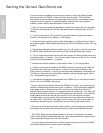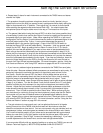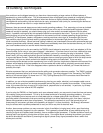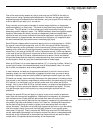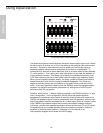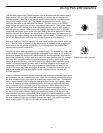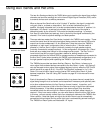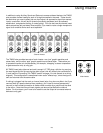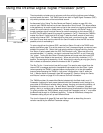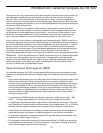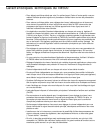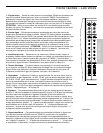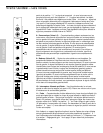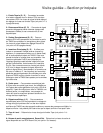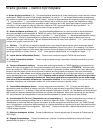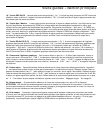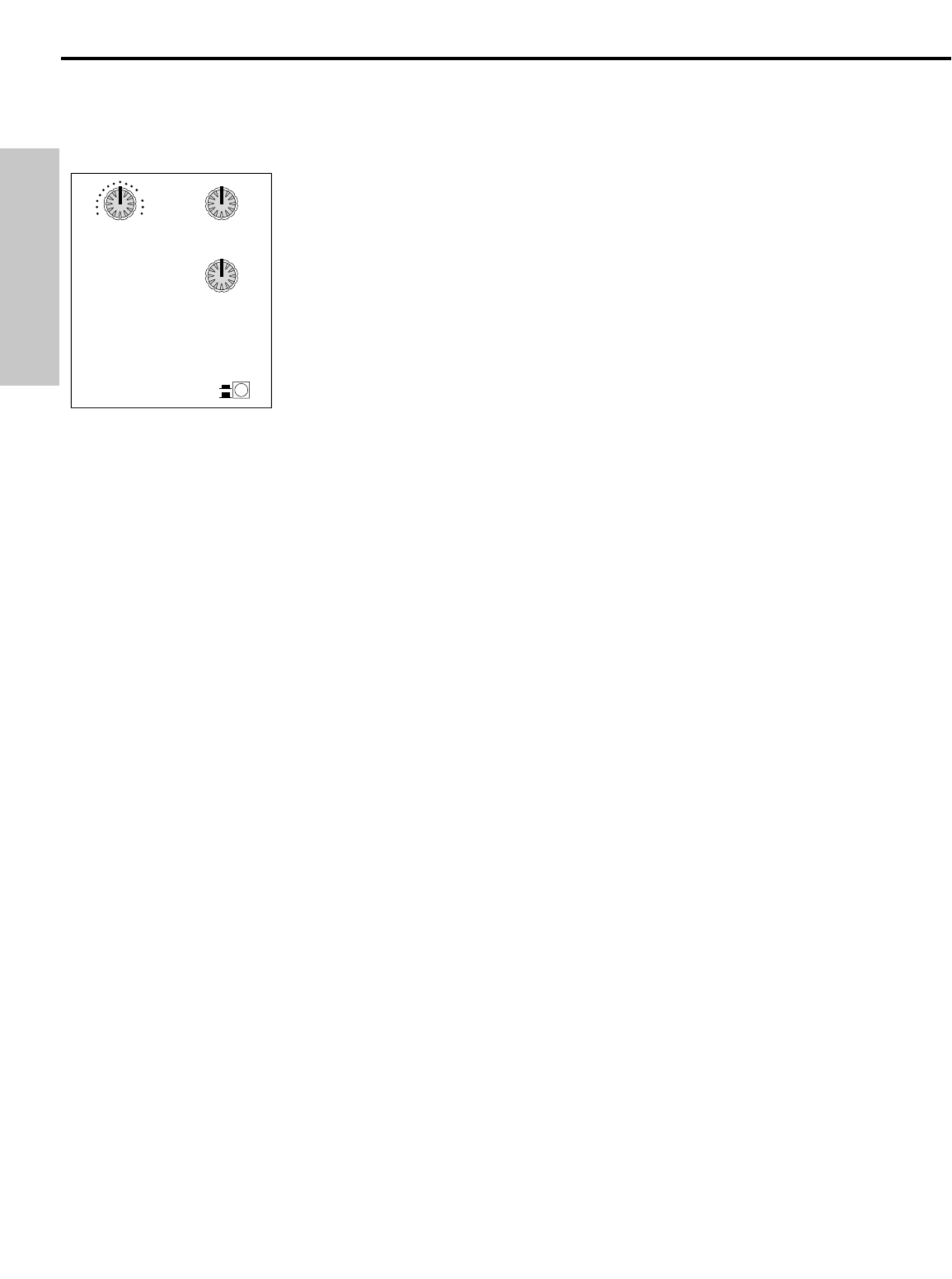
24
There’s probably no better way to enhance audio than with the judicious use of effects
such as reverb and echo. The TM500 has its own built-in Digital Signal Processor (DSP)
chip which provides some of the best effects around.
As discussed in the “Using The Aux Sends and Returns” section on page 20 in this
manual, each TM500 channel has its own discrete Aux Send 2 knob. This allows effects
to be applied only to certain signals and not just to the overall mix (applying effects to the
overall mix could make for a muddy sound). As each channel’s Aux Send 2 knob is
turned clockwise, signal from that channel is routed increasingly to the internal DSP (if
the DSP On/Off switch (see #19 on page 8) is pressed in [“on”]). Note that the TM500’s
master Aux Send 2 Level knob (#10 on page 7) sets the overall amount of level being
routed to the internal DSP. For best signal-to-noise ratio, you should use the master
Aux Send 2 Level knob and the channel Aux Send 2 knobs to drive the DSP as hot as
possible, short of overloading it.
To return signal from the internal DSP, use the Aux Return 2 knob in the TM500 main
section (see #9 on page 7) to set the amount of “wet,” processed signal you want to have
added to the overall mix. (Note: this knob sets the amount of signal returning from the
Aux Return 2 jacks instead when the DSP On/Off switch is off). When set to the fully
counterclockwise (“∞”) position, no signal is returned from the DSP, so you’ll hear only
“dry” signal. Turning the Aux Return 2 knob clockwise will cause more and more DSP
(“wet”) signal to be added to the overall mix. When set to the fully clockwise (“+10”)
position, the wet signal is boosted by 10 dB. Wet signal is returning at unity gain (that is,
with no boost or attenuation) when the knob set to the “0” position.
The Rev To Aux 1 Level control (see #16 on page 7) is used to return signal from the
internal DSP to onstage monitors or headphones connected to the Aux Send 1 jacks
(when operating the TM500 in standard stereo configuration) or to the right speaker
outputs (when operating the TM500 in “split mono” configuration—that is, when the
Aux 1 / Monitor switch is pressed in [see #20 on page 8]). See the “Using Aux Sends
and Returns” section on page 20 in this manual for more information.
The TM500 provides 16 preset effect Banks (selected with the Bank knob), and 16
Parameter variations for each preset (selected with the Parameter knob), making for a
grand total of 256 different reverbs, delays, echoes, flanging, and chorusing effects—all
available at the touch of a knob. For each Bank, Parameter 1 provides a “standard”
setting—that is, a variation that is deemed as being most characteristic of that Bank type.
To quickly audition the TM500 effects, simply leave the Parameter knob at “1” and rotate
the Bank knob through its 16 different positions. To hear all 256 effects, change the
Parameter setting as you call up each different Bank.
The chart in Appendix A (page 56) lists each Bank as well as describing the sonic
variation caused by the different Parameter settings
Using the Internal Digital Signal Processor (DSP)
1.GATED REVERB
2.REVERB/DELAYS
3.DELAY/REVERB/FLANGER
4.REVERB+FLANGER
5.REVERB/DELAY+FLANGER/CHORUS
6.REVERBS/FLANGER
7.REVERB I
8.REVERBS2 + REVERBS2
9.REVERB+REVERB
10.REVERB2
11.DELAYS
12.DELAYS+GATED REVERB
13.DELAYS+DELAYS
14.GATES+REVERSE
15.DELAYS/FLANGER
16.FLANGER/CHORUS+FLANGER/CHORUS
REV TO AUX1
∞
+10
0
BANK
3
1
2
4
5
6
7
8
9
10
11
12
13
14
15
16
PARAMETER
3
1
2
4
5
6
7
8
9
10
11
12
13
14
15
16
ON
OFF
AUX2 DSP
DSP Controls
ENGLISH



